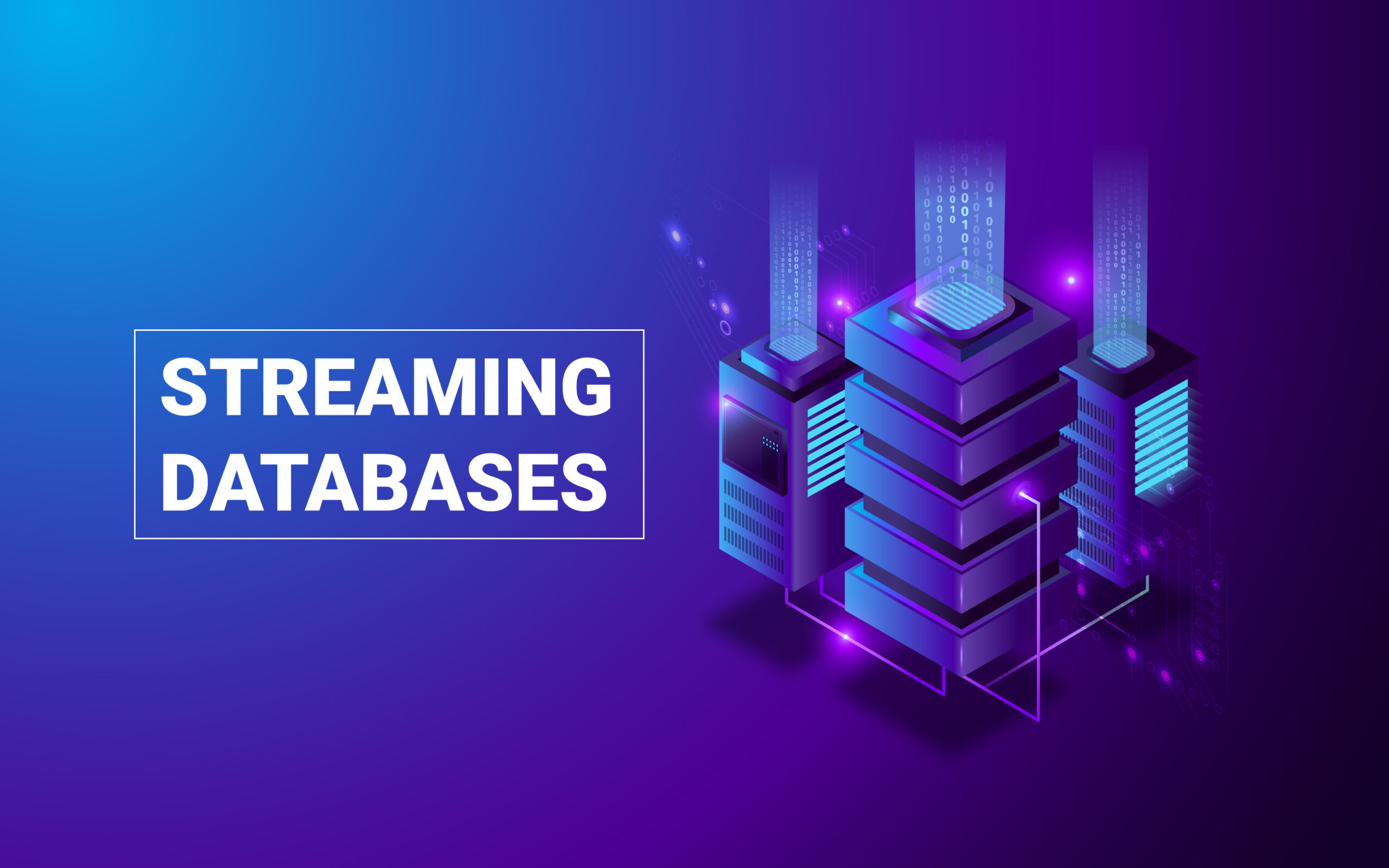In today's fast-paced digital landscape, the ability to harness real-time data has become essential for organizations striving to make informed decisions and remain competitive. This comprehensive guide explores the world of streaming databases, shedding light on their distinct characteristics and advantages in handling streaming data. We will delve into the differences between streaming databases and other technologies like stream processing engines, OLAP databases, data warehouses, and messaging systems. By the end of this journey, you'll have a clear understanding of how streaming databases can revolutionize your data management strategies and shape the future of data-driven decision-making.
Streaming Database vs. Stream Processing Engine
Let's dive into a fundamental question: What sets a streaming database apart from a stream processing engine? While both deal with data in motion, they serve distinct purposes.
A stream processing engine primarily focuses on the real-time processing and analysis of data as it flows. Popular stream processing engines include Apache Flink, Apache Spark Streaming, Apache Samza, Apache Storm, and more. These engines handle tasks like data enrichment, filtering, and transformation. Stream processing engines excel at executing complex computations on streaming data, often offering low-level APIs in Java or Python languages. Some, like Apache Flink and Apache Spark Streaming, even provide a SQL wrapper on top of their low-level APIs.
On the other hand, a streaming database combines the capabilities of a traditional database with the ability to handle high-speed, real-time data ingestion. Popular streaming databases include RisingWave and KsqlDB. They store and manage data while enabling real-time querying and retrieval. In essence, a streaming database is a database equipped to handle continuous streams of data alongside traditional query operations.
With a stream processing engine, data transformation is possible, but these engines lack storage capabilities. Consequently, a separate database is required to store input or output data. In contrast, streaming databases provide native storage support, allowing you to persist data and serve ad-hoc queries seamlessly.
Is a streaming database just a fusion of a stream processing system and a database?
While it may seem that way, a streaming database is more specialized. It combines features from both systems and optimizes them for real-time ingestion, processing, and querying of streaming data. Notably, streaming databases do not typically support transaction processing. Instead, they leverage a key database concept known as materialized views to represent streaming jobs, ensuring these views are always up-to-date.
From a design perspective, incorporating storage capabilities into a streaming computation engine is a natural approach to process streaming data efficiently. This is because during stream processing, a system must maintain its internal states, representing the data or information retained over time. These internal states must be fault-tolerant and easily scalable across different machines. Storing these states in a persistent storage system is an elegant way to achieve fault tolerance and dynamic scaling.
What are the differences between a streaming database and a real-time OLAP database?
Streaming databases like RisingWave and KsqlDB prioritize result freshness, employing an incremental computation model to optimize latency. In RisingWave, users can pre-define queries, and the system updates query results incrementally as new data arrives. Users can choose to store input and output within RisingWave or deliver them directly to downstream systems. While RisingWave can handle ad-hoc queries, it's not optimized for supporting concurrent user-initiated analytical queries that require long-range scans.
On the other hand, OLAP databases, such as Apache Druid, Apache Pinot, and ClickHouse, excel at efficiently answering user-initiated analytical queries. They often implement columnar stores and a vectorized execution engine to accelerate complex query processing over large datasets. OLAP databases shine in use cases where interactive queries are crucial. However, they are not optimized for incremental computation, making it challenging to ensure result freshness. They also lack features like windowing functions and out-of-order processing, making them unsuitable for supporting stream processing applications.
| Streaming Databases | OLAP Databases | |
| Examples | RisingWave, KsqlDB | Apache Druid, Apache Pinot, ClickHouse |
| Optimized for | Continuous analytics | Interactive analytics |
| Computation Model | Incremental computation, event-driven | Full computation, user-triggered |
| Sample Applications | Continuously monitor "the top 30 longest trips in the last 2 hours" or "the top 10 hottest zip codes for passengers" | Quickly answer questions like "how many users used the Uber app yesterday?" or "What's the average mileage for Uber drivers daily?" |
Several differences distinguish a streaming database from a real-time analytical database
Streaming databases and OLAP databases both support real-time analytics, but stream processing systems emphasize the real-time nature of computational results, while real-time analytical systems focus on the real-time nature of user interaction. By design, OLAP databases may not support many stream-processing applications. Here are some examples:
- Streaming ETL: Users often need to continuously join multiple data streams from different sources (e.g., messaging queues, OLTP databases, file systems) and deliver results to downstream systems like data warehouses and data lakes.
- Continuous monitoring: Users may want to monitor query results continuously.
- Out-of-order processing: Due to network or system issues, data can arrive out of order in many scenarios. However, users may require results to be computed in a predetermined order.
What are the differences between a streaming database and a data warehouse?
A data warehouse serves as a repository for storing and managing historical data, primarily used for business intelligence and decision support. It enables in-depth analysis of historical trends and often involves batch processing for data loading and updates.
On the other hand, a streaming database focuses on real-time data, providing applications with access to the most current information. While both solutions handle data storage and retrieval, streaming databases are tailored for low-latency access to streaming data, while data warehouses prioritize historical data analysis.
In practice, streaming databases can complement data warehouses. Many users employ data warehouses like Redshift and Snowflake to store historical data and support complex analytical queries. Concurrently, they use streaming databases like RisingWave to maintain materialized views for real-time data processing.
Streaming Database vs. Streaming Platforms
Streaming Platforms, such as Apache Kafka, Apache Pulsar, or Redpanda, are designed for message passing and event-driven communication between different components of a system. They play a pivotal role in building decoupled and distributed applications.
A streaming database complements streaming platforms by ingesting data from these platforms, processing the streaming data, and storing it in a structured format. This enables SQL-like querying capabilities for real-time analytics. Typically, streaming databases work alongside streaming platforms to provide end-to-end solutions.
Key Benefits of Using Streaming Databases
Now that we've explored what streaming databases are and how they differ from other technologies, let's delve into their key advantages:
- Real-Time Insights: Streaming databases grant instant access to up-to-the-second data, empowering businesses to make informed decisions in real-time.
- Low Latency: They offer low-latency data ingestion and query responses, making them ideal for applications requiring immediate responses.
- Scalability: Streaming databases can horizontally scale to accommodate growing data volumes, ensuring they can handle increasing workloads.
- Simplified Architecture: By consolidating data storage and processing in a single platform, streaming databases simplify the architecture of real-time applications.
Streaming Database Examples
Several streaming databases have gained popularity in recent years, each with unique features and strengths:
- RisingWave: RisingWave is an open-source distributed SQL database designed for stream processing. It processes streaming data using PostgreSQL-style SQL as the interface, allowing users to ingest, manage, query, and store continuously generated data streams. RisingWave reduces the complexity and cost of building real-time applications by consuming streaming data, performing incremental computations as new data arrives, and updating results dynamically.
- KsqlDB: KsqlDB is an open-source streaming SQL engine for Apache Kafka, simplifying the development of real-time stream processing applications. It enables users to express stream processing logic through SQL-like queries, making it accessible to data analysts and developers proficient in SQL. KsqlDB can process and analyze data in real-time from Kafka topics, handling tasks like data transformation, filtering, and aggregation.
- Materialize: Materialize is a streaming database that leverages SQL for processing. It can automatically refresh materialized views in a consistent manner, allowing concurrent querying of data in these views. Materialize builds upon Timely Dataflow, developed by Microsoft Research to support incremental and iterative processing. It employs a hot-standby model for fault tolerance.
- Timeplus: Timeplus is a data analytics platform designed with a focus on streaming-first analytics, enabling organizations to process both streaming and historical data quickly and intuitively. It empowers data and platform engineers to unlock the value of streaming data using SQL
- DeltaStream: DeltaStream is a stream processing platform designed for developing and deploying streaming applications. It is built on Apache Flink, offering a unified SQL interface for querying and processing streaming data using standard SQL syntax.
In summary, streaming databases represent a potent solution for organizations seeking to leverage real-time data. They stand apart from technologies like stream processing engines, OLAP databases, data warehouses, and messaging systems, offering distinct capabilities and advantages. Despite the challenges they pose, the benefits they provide, such as real-time insights and low-latency data access, make them an enticing choice for modern applications. As the data landscape continues to evolve, streaming databases will undoubtedly play an increasingly pivotal role in shaping the future of data-driven decision-making.






